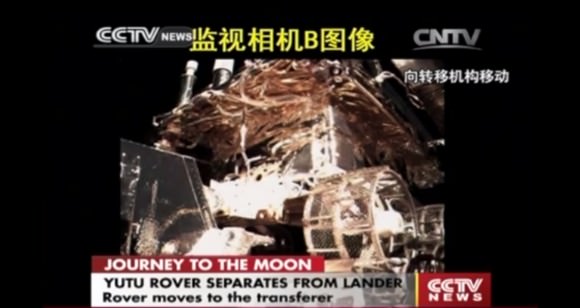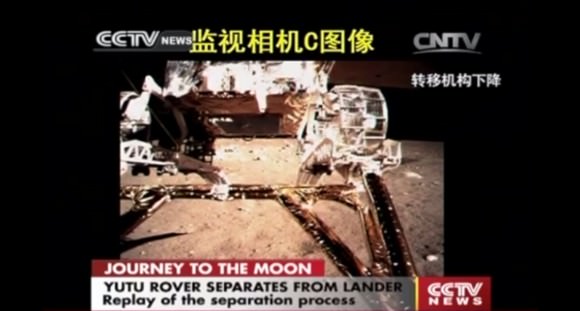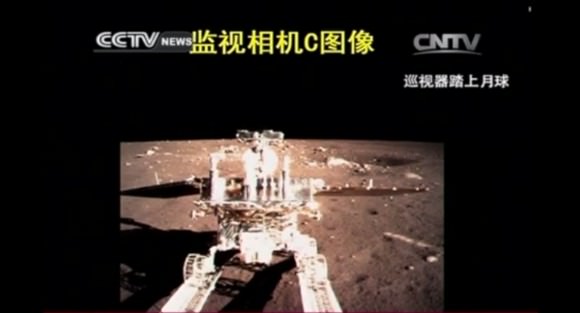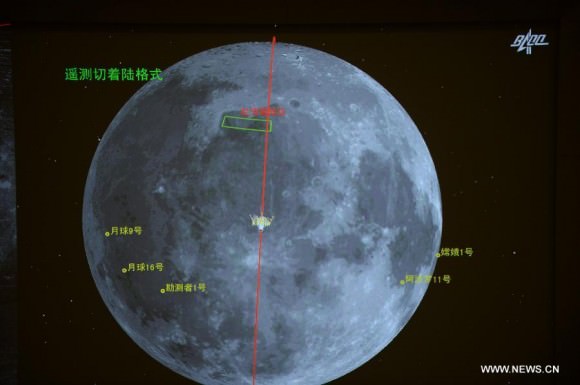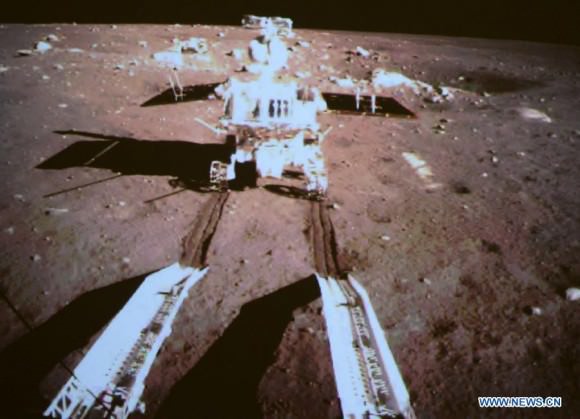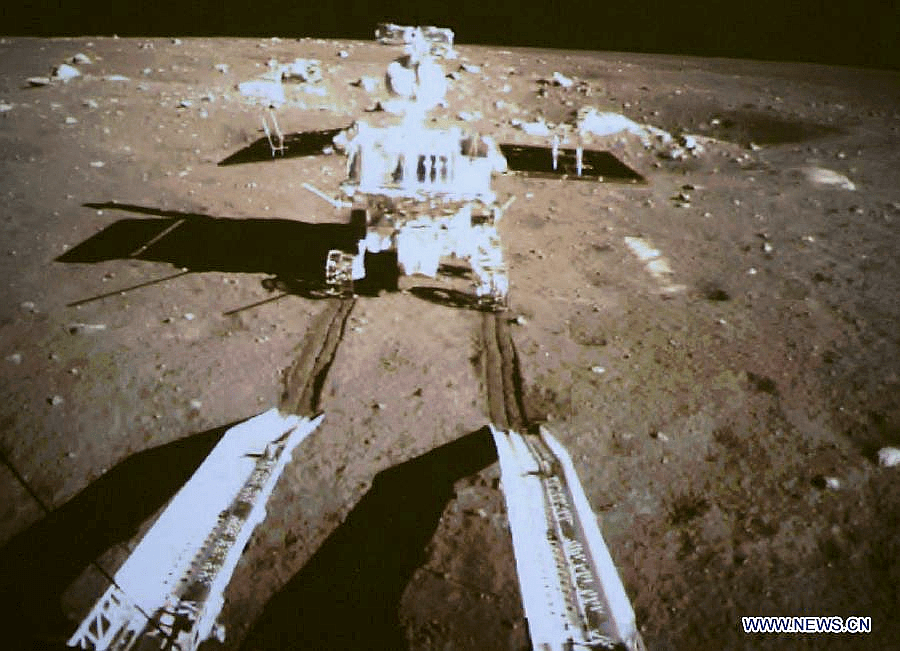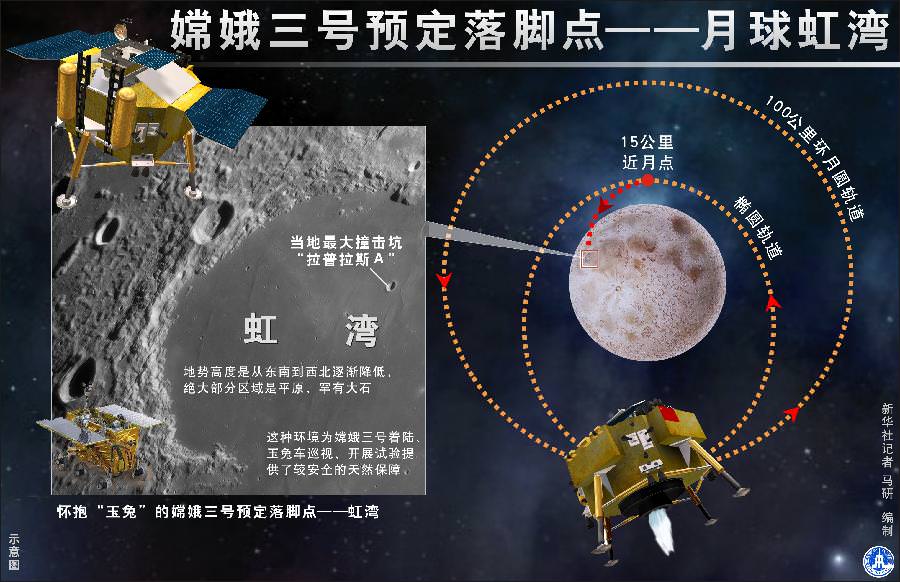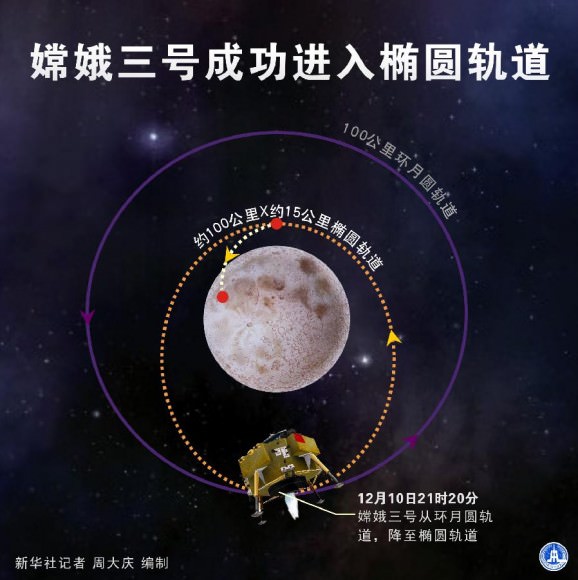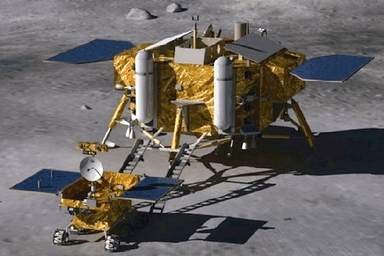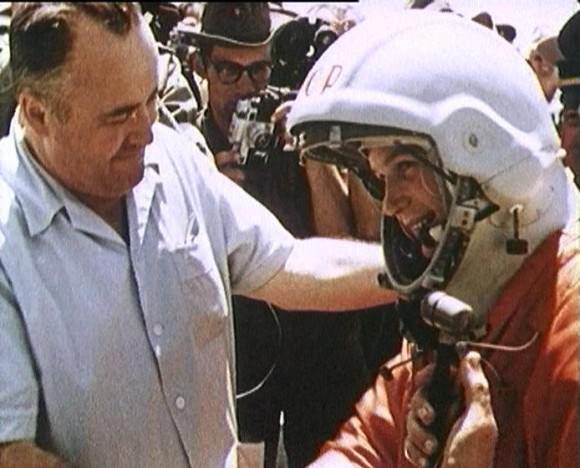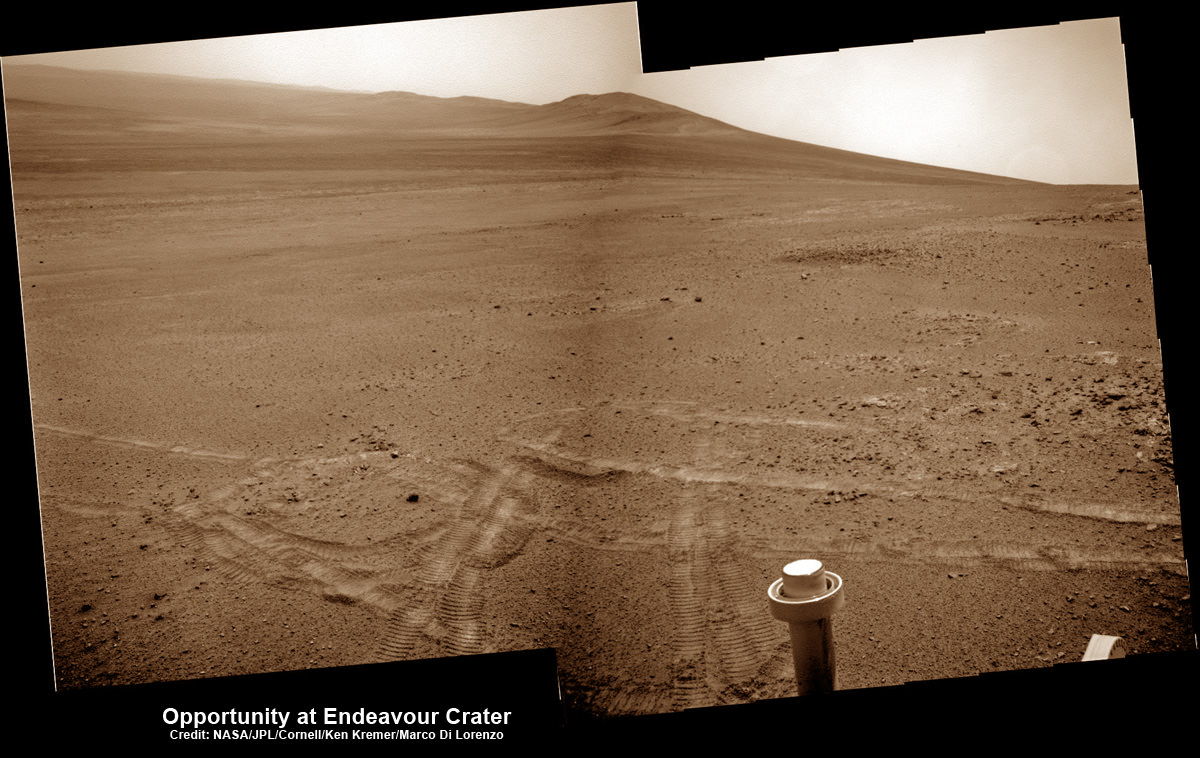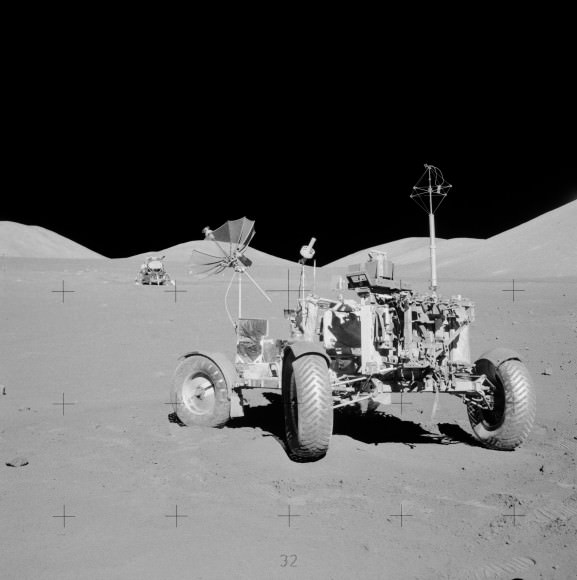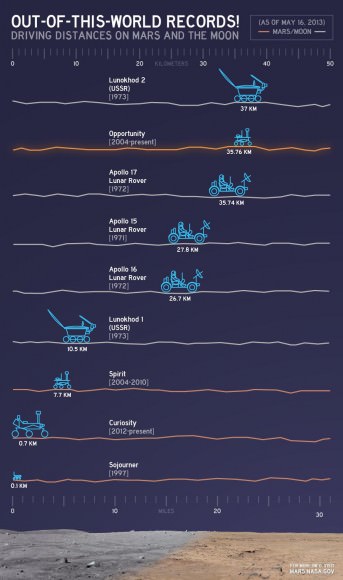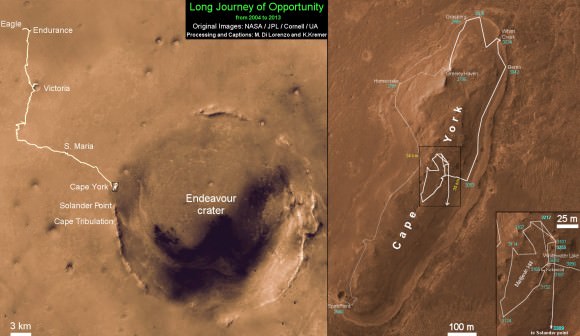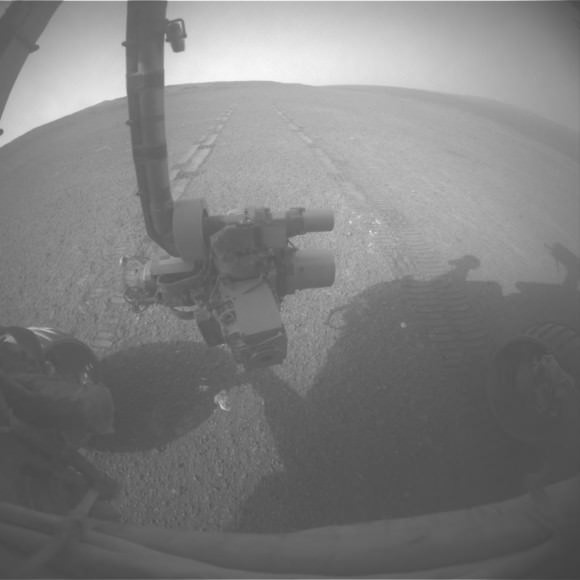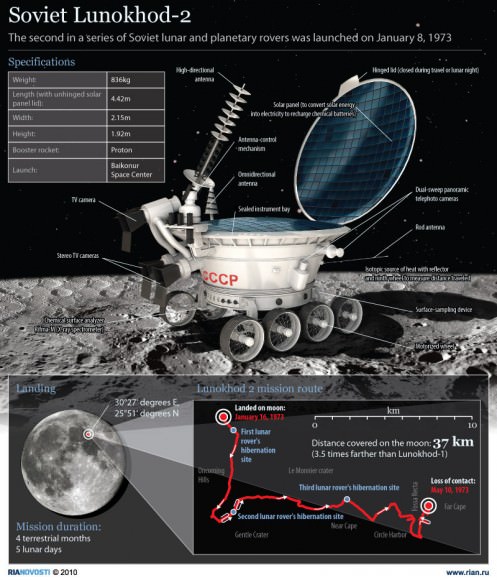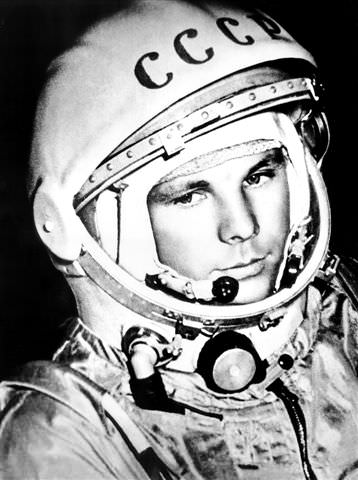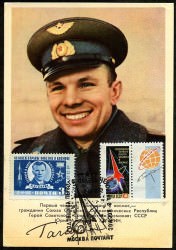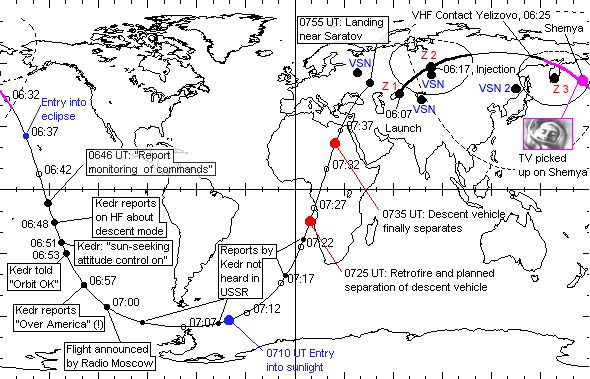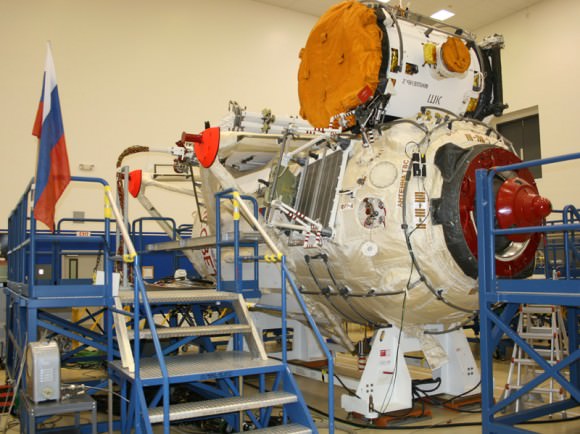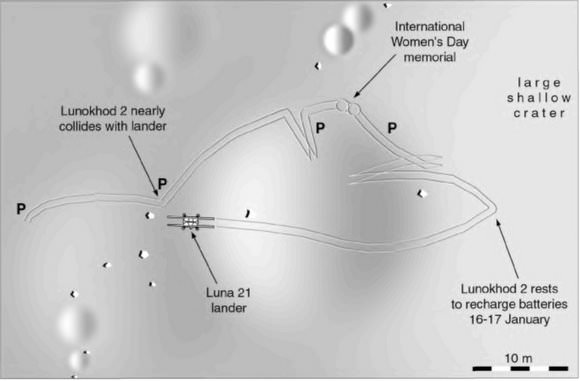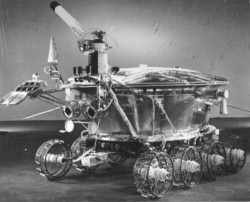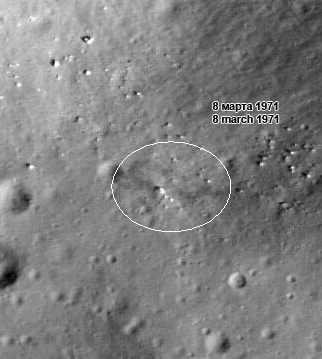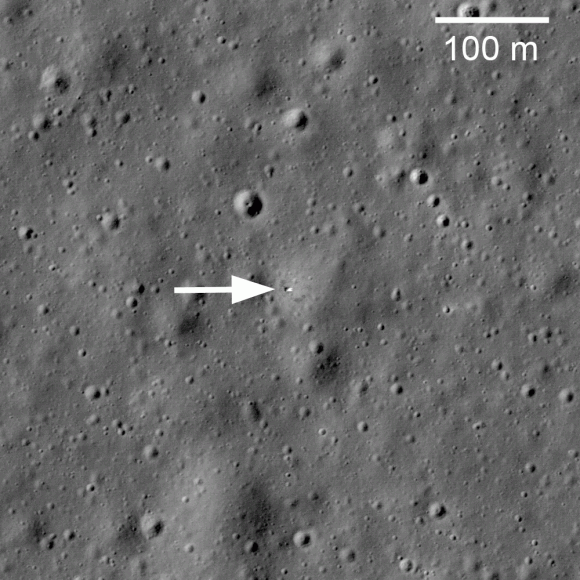China’s first lunar rover separates from Chang’e-3 moon lander early Dec. 15, 2013. Screenshot taken from the screen of the Beijing Aerospace Control Center in Beijing. Credit: Xinhua/post processing by Marco Di Lorenzo/Ken Kremer
Updated- See below Photo Gallery of Yutu’s descent to lunar surface on Dec. 15, 2013[/caption]
China’s first ever lunar rover rolled majestically onto the Moon’s soil on Sunday, Dec. 15, barely seven hours after the Chang’e-3 mothership touched down atop the lava filled plains of the Bay of Rainbows.
Check out the gallery of stunning photos and videos herein from China’s newest space spectacular atop stark lunar terrain.
The six wheeled ‘Yutu’, or Jade Rabbit, rover drove straight off a pair of ramps at 4:35 a.m. Beijing local time and sped right into the history books as it left a noticeably deep pair of tire tracks behind in the loose lunar dirt.
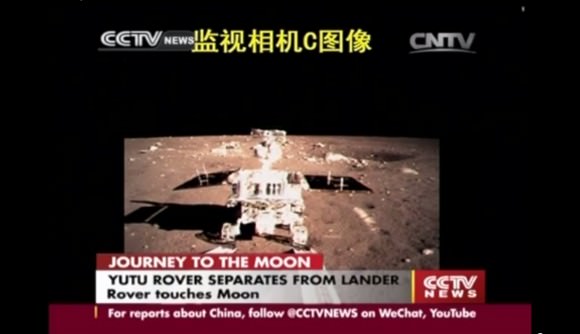
The stunning feat was broadcast on China’s state run CCTV using images transmitted to Earth from cameras mounted on the Chang’e-3 lander and aimed directly at the rear of the departing moon buggy.
Watch this YouTube video from CCTV showing the separation of ‘Yutu’ from the lander:
The scene was reminiscent of NASA’s Mars Sojourner rover driving of the Mars Pathfinder lander back in 1997.
Chinese space engineers based at the Beijing Aerospace Control Center (BACC) carefully extended a pair of ramps out from the lander in a complex process, drove Yutu onto the ramps and then gently lowered them onto the moon’s soil.
China’s Change’-3 mission had just safely soft landed on the Moon hours only earlier on Saturday, Dec. 14 at 9:11 p.m. Beijing time, 8:11 EST at the Sinus Iridum region, or Bay of Rainbows.
China thus became only the 3rd country in the world to successfully land a spacecraft on Earth’s nearest neighbor after the United States and the Soviet Union.
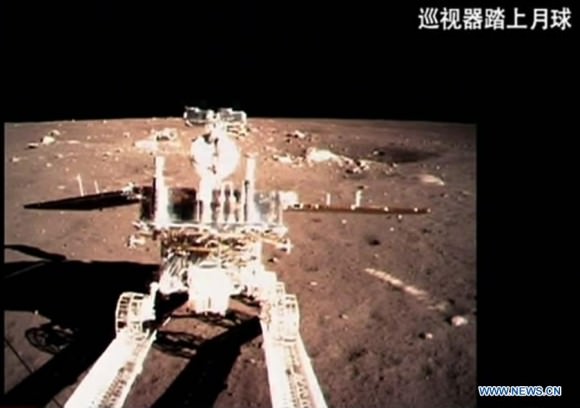
It’s been nearly four decades since the prior lunar landing was accomplished by the Soviet Union’s Luna 24 sample return spacecraft.
Read my detailed account of the Chang’e-3 landing on Dec. 14 – here.
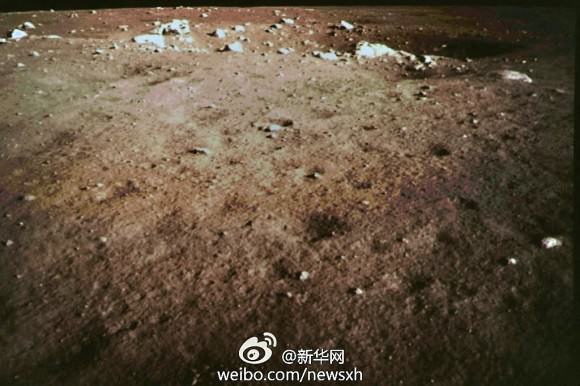
Watch this YouTube video compilation of CCTV’s Dec. 14 landing coverage:
Over 4600 images have already been transmitted by Chang’e-3 in less than a day on the Moon.
Tomorrow, the 120 kg Yutu rover will begin driving in a circle around the 1200 kg lander.
And the pair of lunar explorers will snap eagerly awaited portraits of one another!
The rover and lander are equipped with 8 science instruments multiple cameras, spectrometers, an optical telescope, ground penetrating radar and other sensors to investigate the lunar surface and composition.
The radar instrument installed at the bottom of the rover can penetrate 100 meters deep below the surface to study the Moon’s structure and composition in unprecedented detail, according to Ouyang Ziyuan, senior advisor of China’s lunar probe project, in an interview on CCTV.
China’s Chang’e-3 probe joins NASA’s newly arrived LADEE lunar probe which entered lunar orbit on Oct. 6 following a spectacular night time blastoff from NASA’s Wallops Flight Facility in Virginia.
Stay tuned here for Ken’s continuing Chang’e-3, LADEE, MAVEN, MOM, Mars rover and more news.
